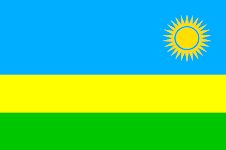This past weekend I went to Nyungwe National Forest in the Southern Province near my house in Nyamagabe. The allure of seeing a chimpanzee while hiking in an eco-montane forest screams AFRICAN ADVENTURE. After arriving at the visitor center and looking over the potential hikes, I noticed an unexpected sign which listed USAID and the American People as the donors of the visitor center. Really? I thought to myself, is this the most pressing development issue? On the way to the forest we passed town after town of underfunded schools, acres of subsistence farms, and no health centers. Easily this money could have gone to fund a smaller project directly impacting one of these areas. But it in the end it didn’t, and this is the problem with development as tourism.
Tourism has proven to be a tool used in increasing GDP and the standard of living in many developing countries. Natural resource/wildlife rich countries who find themselves in the bottom of the HDI such as Tanzania and Kenya have used their natural gift of the Serengeti, Mt. Kilimanjaro and the Great Migration to attract tourists from around the world who bring in enormous amounts of cash. For example, Tourism remains a significant portion of the Services Sector in Kenya, which consists of nearly 60% of the nations GDP. By creating an atmosphere for tourism they have increased the standard living for all citizens. Rwanda is currently hoping to be a part of this tourism as development success story, yet has a long way to go.
Arriving at Nyungwe with my girlfriend and her visiting friend was exciting, as we had high hopes of seeing chimpanzees in their natural habitat. Once we arrived however we learned that the chimpanzee tracking starts at 5:30 AM, a fact that the Bradt guide book we had, the flyer the park ranger gave us and the multiple internet sites failed to list before arriving. No problem, let’s do another hike we thought. A beautifully displayed list of hikes, estimated distance, required time, level of difficulty and highlights of the trails were listed (all compliments of the plaque provided by the American People). As I glanced over the hikes the first one I saw was an opportunity to use a canopy bridge. Lets do it! The ranger then mentioned that the bridge wasn’t finished yet, sorry…next time. I disregarded the fact that they already had a picture of people walking on a treetop bridge. Ok, let’s do the hike that guarantees a waterfall! Nope sorry, a tree fell and it’s difficult to pass. Sounds like a typical problem in a forest I guess, so we went on and chose the Yellow Trail, a nice trail that provides the opportunity to see monkeys and is moderately difficult. DEAL! As we handed our money to the ranger at reception and waited for our change….Oh sorry we don’t have bills to change here the ranger said. Really? So everyone has the exact amount that you ask for EVERYTIME? The frustration of this was also compounded by the fact that there is one bus service that runs to the visitor center. It must be caught in Butare, 30 minutes in the opposite direction from my home, which is closer to Nyungwe AND which Sotra (the bus services) would have to pass. Luckily, with the help of my counterpart, I was able to find a driver to personally drive us on the terribly paved roads, past the six landslide areas.
As I thought about these my frustrations, part of me thought, this is Africa and I can’t come with my American comforts and standards and apply them to all things Rwandan. As I thought about it more I realized that these frustrations weren’t because of my standards, as much as it is my frustration with poorly planned development. USAID was happy to front the money, adding a visitor center to a widely unknown, yet tourism ‘diamond in the rough’ forest of Nyungwe in hopes of bringing in more tourists and opening the tourism money floodgates. This intervention is the typical shortsighted aid organization project that didn’t factor in all of the pieces to the puzzle. The simple addition of one item in the flow chart is what USAID felt was the missing. Visitor center + more visitors= development. Right?! Yeah! We just saved lives …Not really.
The small problems that we encountered are all problems that need to be addressed for this visitor center to reach its target of increasing tourism revenue, providing jobs, bringing money to the local communities… the list continues. Tourism can have tremendous benefits on the economy of a country, but without substantial planning, money is wasted, ending up in our case, spent on an empty visitor center in a hard to reach forest. It is great to see the signs in Kigali advertising Nyungwe with its 200 plus species of birds and 13 primates but what happens when someone asks, how can I get there? These are the questions that need to be asked before projects are funded and before time and effort are spent attempting development as tourism.
Subscribe to:
Post Comments (Atom)


No comments:
Post a Comment